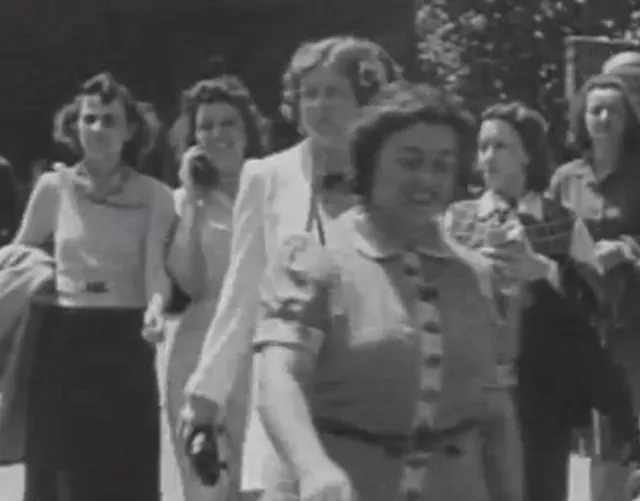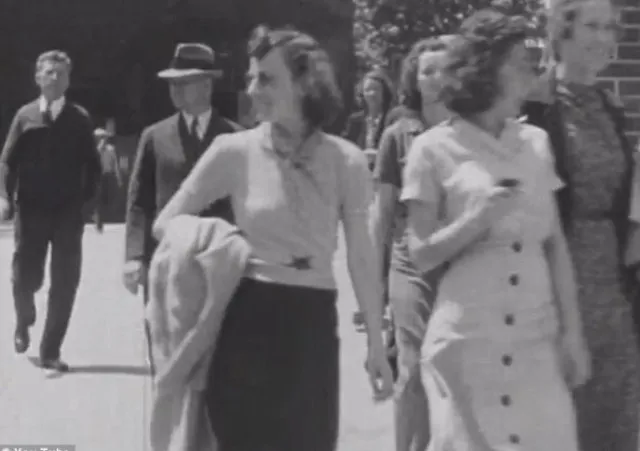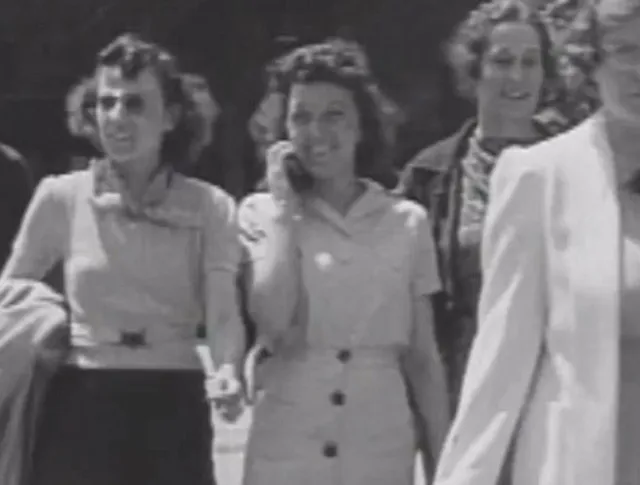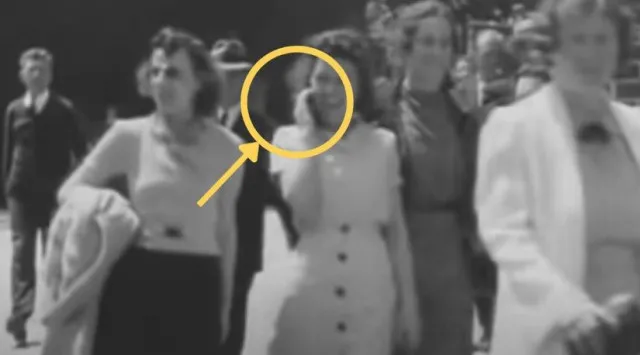In the realm of conspiracy theories, few topics capture the imagination as much as time travel. A 1938 video clip, which appears to show a woman using a mobile phone, has recently reignited debates about whether time travel could be possible. This mysterious footage has left conspiracy theorists buzzing and the internet in a frenzy, with many wondering: Is this video proof of time travel, or just a bizarre coincidence?
The Eerie 1938 Footage: A Woman and a ‘Mobile Phone’

The now-famous footage from 1938 features a woman dressed in typical attire for the time, seemingly walking away from a factory with something held up to her ear. At first glance, this scene might not seem unusual—until you realize that mobile phones didn’t exist in 1938. The woman appears to be talking into a small device, a motion eerily similar to how we would use a smartphone today. The video, which first surfaced online in 2013, has since gone viral, sparking an avalanche of conspiracy theories.
The most notable of these claims is that the woman is a time traveler from the future, caught on camera using her mobile phone. The clip has fascinated both casual viewers and devoted conspiracy theorists alike, leading many to believe in the possibility of time travel. But could there be another explanation for this strange sight?
The Origins of the Video: Who is Gertrude Jones?
The mystery deepened when a YouTuber known as Planetcheck claimed to have insider knowledge about the video. According to Planetcheck, the woman in the footage is their aunt, Gertrude Jones, who was 17 years old at the time. Planetcheck’s story adds an unexpected twist: Gertrude was supposedly involved in an experiment with wireless telephones being conducted by the chemical company Dupont.
According to this account, Gertrude wasn’t a time traveler at all. Instead, she was simply testing a prototype wireless device, communicating with a scientist holding a similar device nearby. This explanation, while intriguing, is unverified, and no evidence has surfaced to substantiate Planetcheck’s claim.
Examining the Claims: Could It Be Time Travel?
Despite Planetcheck’s claim that Gertrude was testing an early form of wireless communication, the video has continued to fuel time travel speculation. Some believe that this explanation is simply a cover-up for the fact that the woman in the footage was using a technology that should not have existed in 1938.
However, experts and skeptics have pointed out several reasons why the time travel theory doesn’t hold water. First, no concrete evidence supports the existence of mobile phones or wireless communication devices in 1938. Additionally, while the idea of time travel is alluring, no verified instances of time travel have ever been documented in history.
More likely, the woman was holding an object that, due to the low quality of the footage and modern biases, appears to resemble a phone. Some have suggested that the woman may have been cupping her ear or holding something mundane, like a small notebook or a hearing aid, which would have been more typical for that era.
The 1860 Painting Controversy: More Evidence of Time Travel?
The 1938 video isn’t the only strange instance in which anachronistic technology has appeared in historical contexts. Another famous example is an 1860 painting by the Austrian artist Ferdinand George Waldmüller, titled “The Expected One.” The artwork depicts a young woman walking while holding an object that, to modern eyes, looks strikingly similar to a smartphone.

This led some to speculate that the woman in the painting might be another time traveler, possibly scrolling through social media or texting. The resemblance to a modern smartphone is undeniable, and it has prompted discussions about whether such devices could have appeared in historical artworks through time travel.
However, art historians and experts have debunked this theory. In fact, the object the woman is holding is a small prayer book, not a smartphone. The image is a classic example of how modern technology can alter our perception of historical artifacts. Peter Russell, a retired Glasgow government officer, noted that our view of art and history is often influenced by current technological advancements, which can cause us to misinterpret historical scenes through a modern lens.
How Modern Technology Alters Our Perceptions of the Past
The theories surrounding both the 1938 video and the 1860 painting highlight an interesting phenomenon: the way we view the past is often colored by the technology of the present. In the case of Waldmüller’s painting, the resemblance between the prayer book and a smartphone is uncanny, but it’s important to remember that our interpretation of the painting is influenced by our current technological world.

Similarly, the woman in the 1938 video may seem to be holding a mobile phone, but it’s just as likely that modern viewers are misinterpreting the object based on what they’re familiar with today. After all, we live in a world where mobile phones are ubiquitous. As a result, we’re more inclined to see a phone where there might have been something else entirely.
Time Travel or Coincidence? The Final Verdict
So, is the woman in the 1938 video proof that time travel exists? Or is it simply a strange coincidence? While the idea of time travel captivates the imagination, there is currently no verifiable evidence to support this theory. It’s more plausible that the woman was holding an object that, due to the grainy footage and our modern perspectives, we perceive as a mobile phone.
The same goes for the 1860 painting—while it may appear that the woman is holding a smartphone, art historians have confirmed that she is simply carrying a prayer book. These incidents highlight how our interpretations of the past are shaped by our present-day experiences, leading us to see things that may not actually be there.
Conclusion: The Power of Perception in Conspiracy Theories

The idea of time travel has always been a tantalizing concept, and cases like the 1938 video and the 1860 painting offer prime material for wild speculation. But more often than not, the simplest explanations are the most likely. In both of these instances, what appears to be futuristic technology may be nothing more than a coincidence or a misinterpretation.
Yet, as long as videos like the 1938 clip continue to circulate, time travel theories will persist. These theories remind us of the power of perception and how easily our understanding of the past can be shaped by the present. Whether it’s time travel or not, one thing is certain—these mysteries will continue to fuel our imagination for years to come.


